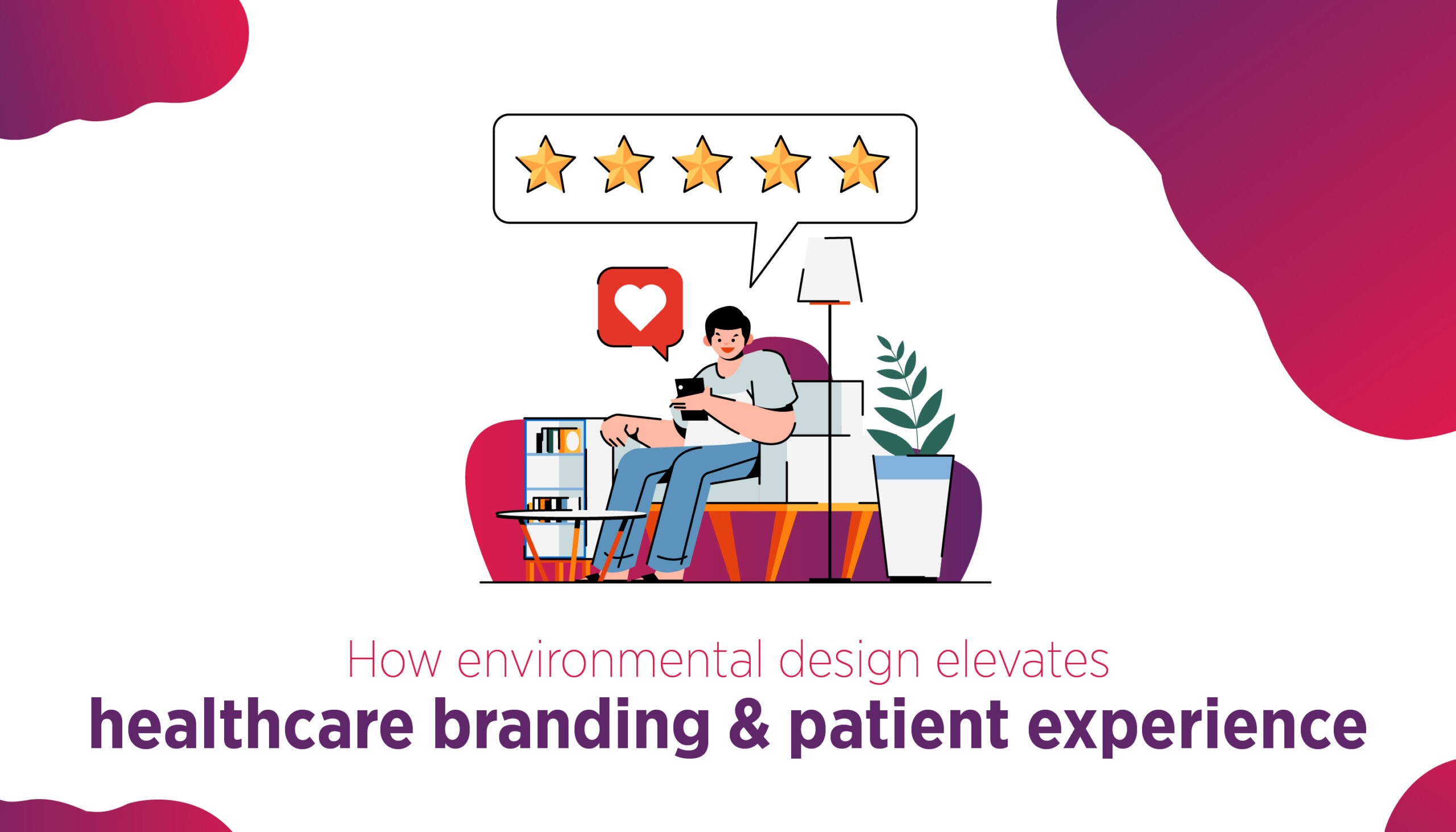
How environmental design elevates healthcare branding and patient experience
The Impact of Environmental Design on Branding and Patient Happiness
Patient experience has evolved as a crucial emphasis for healthcare practitioners in the current day. Healthcare institutions are now investing in developing surroundings that encourage healing, decrease stress, and improve overall patient well-being, in addition to delivering excellent medical treatment.
Environmental design is critical to attaining these aims since it not only improves healthcare branding but also has a substantial influence on the patient experience.
Environmental design is critical to attaining these aims since it not only improves healthcare branding but also has a substantial influence on the patient experience.
Creating a Healing and Welcoming Atmosphere:
The physical setting of a healthcare institution has a significant impact on the mental and emotional wellbeing of patients. Healthcare facilities may instil a sense of security and peace in patients and their families by including features that convey comfort and tranquilly. Warm colour schemes, restful lighting, and natural accents like indoor plants all help to create a pleasant and therapeutic environment.
Incorporating Brand Elements in Design:
Environmental design offers an excellent opportunity for healthcare facilities to reinforce their brand identity. Integrating brand elements such as logos, colours, and mission statements into the physical space helps create a cohesive and consistent brand experience for patients. When patients encounter familiar brand elements throughout the facility, it reinforces trust and familiarity, enhancing the overall perception of the healthcare provider.
Spaces for Stress Reduction and Healing:
Healthcare facilities may frequently be anxiety provoking settings, particularly for people with significant medical issues. Designing the surroundings with care might help patients feel less stressed and anxious. Patients can find places to rest and feel comfort while receiving medical care by designing therapeutic spaces such as meditation rooms, outdoor gardens, or peaceful waiting area.
Promoting Patient Well Being and Comfort:
For healthcare professionals, patient comfort should come first. Environmental design has a big impact on how comfortable patients are. The well-being of patients is positively impacted by things like comfortable furniture, adjustable lighting, and temperature control. Additionally, using art and aesthetics in the design can result in a beautiful setting that adds to the overall comfort.
Enhancing Way finding and Navigation:
Patients and visitors may find it difficult to navigate healthcare facilities due to their size and complexity. Patients may navigate the facility with ease and experience less stress and frustration with the aid of effective wayfinding through environmental design. There are several tactics that can help with easy navigation, including clear signs, user friendly design, and recognisable landmarks.
Challenges in Collaboration and Implementation
Interprofessional Teams
Collaboration between designers, healthcare practitioners, and administrators is necessary to achieve good environmental design in healthcare. The value of inter-disciplinary collaboration must be understood, to make sure that branding objectives are in line with medical needs. There are 2 aspects that must be considered during this process:
A) Resolving Design Issues
It can be difficult to navigate the intricacies of healthcare rules and safety requirements. Aesthetics and functionality must be carefully considered in order to be balanced.
B) Assessing Success
Designing for results is more important than just pleasing the eye. Survey results, data analysis, and patient feedback are crucial instruments for evaluating the effects of environmental design. The value of design investments is validated by evidence of increased patient happiness, wellbeing, and brand perception.
Healthcare Facilities with Exceptional Design:
Environmental design has been effectively used by a number of healthcare institutions to improve their branding and patient experience.
The design of the centre is centred on establishing a patient centred environment with lots of natural light, cosy seating, and outdoor terraces to give patients a sense of hope and optimism during their therapeutic journey.
These success tales encourage other healthcare professionals to implement cutting edge design strategies to improve their patient experience.
Future Trends in Healthcare Environmental Design:
The methodology for environmental design also changes along with technology and medical procedures. Several new trends are as follows:
The methodology for environmental design also changes along with technology and medical procedures. Several new trends are as follows:
Technology Integration for Enhanced Patient Experience: Using interactive digital displays and patient focused applications, for example, technology integration may offer patients individualised information and entertainment, improving their overall experience.
Healthcare providers are increasingly embracing eco friendly and sustainable design principles, which not only help them lower their carbon footprint but also appeal to patients who are concerned about the environment.
Personalised and patient centred approaches: Improving the experience and contentment of patients by customising the design of healthcare facilities to fit their unique requirements and preferences.
Conclusion
Environmental design develops as a dynamic force boosting both branding and the patient journey in the intersection of design and healthcare. This transformation is can be supported by a dedicated healthcare marketing & advertising firm or agency, like BHAAV™, that can look into developing aesthetics of the hospital/centre.
BHAAV™ creates environments that express a brand’s soul via unique environmental design, creating trust and comfort. Their skills enhance patient experiences by turning hospital settings into stories of care.
BHAAV’s™ dedication to improving patient experience and healthcare branding solidifies their position as a visionary partner, transforming how people view healthcare facilities and strengthening the relationship between patients and doctors.
FAQ’s
1. What is environmental design in Healthcare Industry?
The term environmental design in the context of healthcare refers to the purposeful planning and arranging of physical areas inside healthcare facilities with the goal of having a beneficial effect on patients’ feelings, well-being, and overall experience.
2. What impact does the environment have on patient experience?
The atmosphere, layout, and aesthetics of healthcare facilities are influenced by environmental design, which affects patient comfort, stress levels, and perceptions. Environments that are thoughtfully created can promote calmness, lessen anxiety, and increase patient satisfaction in general.
3. How does branding in healthcare connect to environmental design?
The chance to visually express a healthcare brand’s identity, beliefs, and dedication to patient care is provided through environmental design. Integrating consistent branding features into real areas strengthens the brand’s presence and leaves a lasting impression.
4. What are some essential components of a healthcare facility’s environment?
Lighting, colour palettes, signs, navigation, furniture arrangement, and accessibility are all part of effective environmental design. These components come together to provide a unified and patient focused environment.
5. Can the environment affect patient faith in medical facilities?
Yes, patients can feel trusted and credible in settings that have been deliberately created and organised. A practical and aesthetically pleasing setting demonstrates a dedication to providing high quality care, fostering patient confidence.
